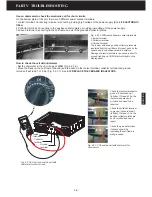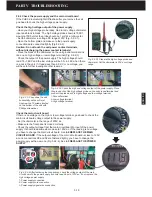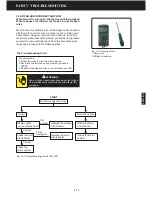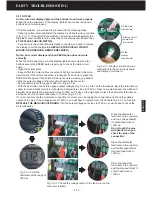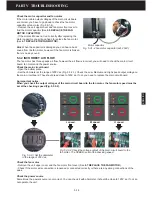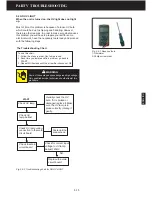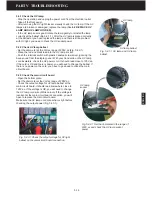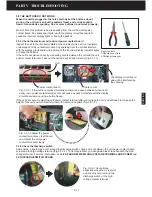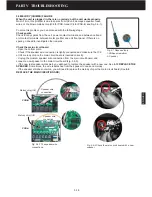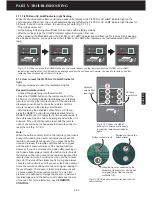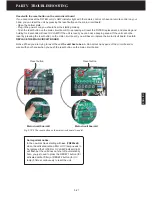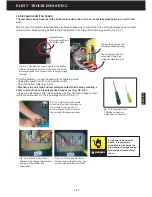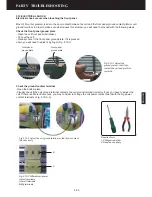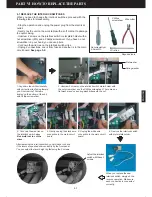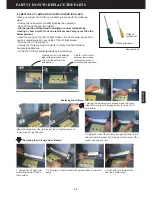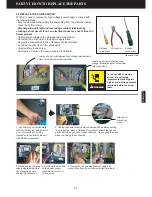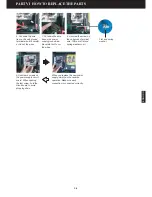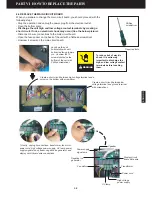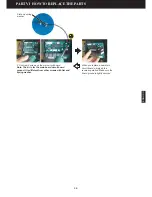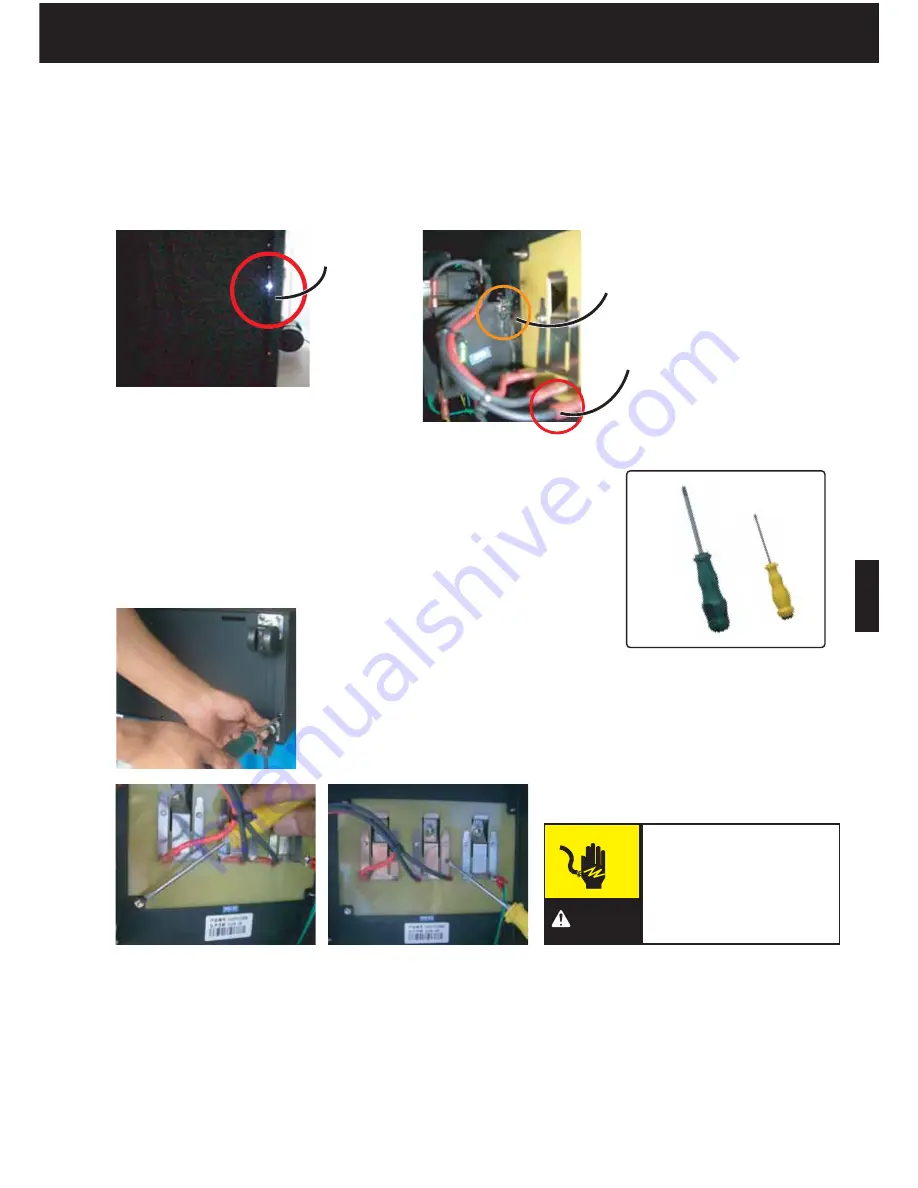
PART V TROUBLESHOOTING
5-23
ENGLISH
5.9 DISCHARGE SWITCH SPARK
The discharge switch sparks to the bottom plate when the unit is on, especially when there is no cell in the
unit.
Most of time, this problem is because the discharge voltage wire is connected to the unit high voltage power contact
terminal, sometimes causing a spark to the bottom plate, or burning of the discharge switch (Fig. 5.9-1).
Fig. 5.9-1 The pictures show a spark to the bottom
plate and discharge switch burning because of the
discharge switch wire connection to the high voltage
terminal.
The sparking causes the
discharge switch burning.
The discharge switch is
connected to the high
voltage contact terminal.
Spark between
discharge switch and
the bottom plate.
Fig.5.9-5 Create a short circuit
between low voltage terminal and
ground terminal with screwdriver.
Fig. 5.9-4 Create a short circuit
between high voltage terminal and
a screw on the bottom with
screwdriver.
WARNING
To reduce risk of electric
shock, it is extremely
important to discharge the
high and low voltage contact
terminals before touching
them.
To fix this problem, you can proceed with the following steps.
- Unplug the power cord from the electrical outlet.
- Open the bottom plate (Fig. 5.9-3).
- Discharge the unit high and low voltage contact terminals by creating a
short circuit. If not, an electrical shock may occur (Fig. 5.9-4~5).
- Unplug the discharge switch black voltage wire from the high voltage contact
terminal and connect it to the low voltage terminal (5.9-6~7).
Fig. 5.9-2 Required tools.
1-Phillips screwdriver
2-Flat head screwdriver
Fig. 5.9-3 Open the bottom plate.
Lay down the unit horizontally on
the soft mat. Unscrew the 10
screws located on the bottom of
the unit with Phillips screwdriver.
Summary of Contents for R200T
Page 69: ...ENGLISH NOTES ...

